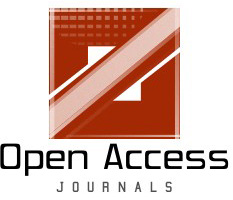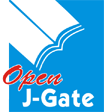Download Cover Page IJMT_March_2012......
PARTICULAR
|
Page No.
|
 The Relationship between Energy Consumption and Economic Growth in Nigeria: A Causality Analysis.
The Relationship between Energy Consumption and Economic Growth in Nigeria: A Causality Analysis.
Haruna Mohammed Aliero and Saifullahi Sani Ibrahim
Abstract:
This study investigates the causal relation between energy consumption and economic growth in Nigeria. Time series data was generated covering 1970 to 2009 periods. The study used both aggregated and disaggregated data of energy consumption; including coal, petroleum, gas, and electricity. In analyzing the data, we employ the Augmented Dickey Fuller unit root tests and Johansen cointegration tests allowing for Granger causality test. The results infers that neither total energy consumption nor economic growth affect each other. On the other hand, finding reveals that petroleum, coal and electricity consumption leads to economic growth without feedback. Moreover, bidirectional causality between economic growth and gas consumption was found.
Download full Lenght Paper......
|
1-13
|
 The Use Of Financial Information In Stock Exchange Investment Decision Making In Capital Markets In Tanzania: A Case Of Zanzibar.
The Use Of Financial Information In Stock Exchange Investment Decision Making In Capital Markets In Tanzania: A Case Of Zanzibar.
A.S.K Norman
Abstract:
Investing in stock exchange requires the proper understanding of some key information about the stock exchange market and the way it operates. The key performance indicators including firms' financial information are important pieces of information required to be availed to the would-be customers/investors. The main research objective was to identify the usefulness of the financial information by the prospective investors when they are making decisions to purchase securities from the companies listed in the stock exchange market in Tanzania. The case study design was employed in the study, which covered 50 respondents in Zanzibar.
Download full Lenght Paper......
|
14-25
|
 Recapitalisation and Bank Performance: Evidence from Banks in Nigeria.
Recapitalisation and Bank Performance: Evidence from Banks in Nigeria.
Saifullahi Sani Ibrahim, Badamasi Sani Mohammed and Ibrahim Musa Gani
Abstract:
This study examined the relationship between recapitalization and banks performance in Nigeria. In order achieve the objective of the study, a time series data was generated for 2000 to 2009 periods. The data was analysed using independent t-test and the study found that net interest margin, funding cost, significantly increases in post-recapitalisation period. On the other hand the study found an insignificant decrease in return on assets of banks after recapitalised. Therefore, the study concluded that the policy (recapitalisation) would subject banks (especially the small banks) in the country into severe liquidity crisis. The study recommended among others, that recapitalization policy should be undertaken with pinch of salt because the major obstacle facing Nigerian banks is not peculiar with shortage of capital.
Download full Lenght Paper......
|
26-36
|
 QoS Routing Protocol Using GAs.
QoS Routing Protocol Using GAs.
Ali. A. Sakr and Mai. R. Ibraheem
Abstract:
Routing protocols in most networks use the length of paths or the minimum-hops can be achieved, as the routing metric and the QoS requirements. This led to the motivation to propose a new algorithm that satisfies multiple constraints for finding a feasible path and apply GA to reduce the time taken to find a feasible path. This paper explores the potential of using genetic algorithm to solve the QoS routing protocol problem. The most critical task for developing a genetic algorithm to this problem is how to encode a path into a chromosome; new coding method has been used with new genetic operators. The evaluation function carried out using Reduced QoS Routing (RQoSR) evaluated by Ali A Sakr et.al.
Download full Lenght Paper......
|
37-52
|
 An Empirical Study Of Managing Fairness In Electoral System Through Reforms.
An Empirical Study Of Managing Fairness In Electoral System Through Reforms.
Dr. A. B. Siddiqui
Abstract:
An election is a formal decision-making process by which a population chooses an individual to hold public office. Independent India, as an election-based representative democratic Nation, have successfully existed as a largest democracy in the World for more than six decades now. But after travelling these many miles we find the credibility of our electoral system is still not unquestionable.
Download full Lenght Paper......
|
53-74
|
 Analytical Model for Just-in-Time Purchasing.
Analytical Model for Just-in-Time Purchasing.
Renu Bala
Abstract:
Just-in-Time purchasing strategy is adopted by organizations to gain advantage over their competitors. Implementation of purchasing strategy can increase firms' performance. Just-in-Time purchasing strategy has benefits like higher inventory turnover, increased product quality and productivity. This strategy lead to a reduction in product costs. Lower prices will lead to increased market share and profit. This paper is based on model of Just-in-Time purchasing factors like top management commitment, employee relations, training, supplier quality management, transportation, and quantities.
Download full Lenght Paper......
|
75-81
|
 State Of Total Quality Management In Pharmaceutical Industry: Literature Review.
State Of Total Quality Management In Pharmaceutical Industry: Literature Review.
Jyoti Mittal and Shweta Singh
Abstract:
Total Quality management is a crusade in Indian pharmaceutical industry and is one such approach along with government regulatory requirements that seeks to improve quality and performance in Pharmaceuticals which will meet or exceed customer expectations. An effective quality assurance policy with defined mission and objectives is the most important goal of pharmaceutical industry. Quality assurance and quality control together develops towards assuring the quality, safety and efficacy of pharmaceutical products. They should strive to achieve perfection by continuously improving the business and production processes.
Download full Lenght Paper......
|
82-91
|
 Effect of Brand Image & Self Image Congruency on Brand Preference & Customer Satisfaction.
Effect of Brand Image & Self Image Congruency on Brand Preference & Customer Satisfaction.
Reshma Farhat and Dr. Bilal Mustafa Khan
Abstract:
Objective - The brand image is of paramount importance for customers as well as marketers. Beyond their functional utility, products have a symbolic meaning. Parts of this symbolic meaning are accounted for by concepts like brand image and product-user image. The study provides an insight into various aspects of brand image and self-image congruency. The purpose of this article is to show that product image influences consumer preferences and satisfaction through a congruence effect.
Download full Lenght Paper......
|
92-102
|
 Global Recession and its Impact on Developing Economies.
Global Recession and its Impact on Developing Economies.
Smt. S. Binduja and Dr. V. J. R. Emerlson Moses
Abstract:
In economics, a recession is a business cycle contraction, a general slowdown in economic activity. During recessions, many macroeconomic indicators vary in a similar way. Production, as measured by gross domestic product (GDP), employment, investment spending, capacity utilization, household incomes, business profits, and inflation all fall, while bankruptcies and the unemployment rate rise. Recessions generally occur when there is a widespread drop in spending, often following an adverse supply shock or the bursting of an economic bubble.
Download full Lenght Paper......
|
103-113
|
 Exploration Of Critical Success Factors And Consumer Buying Behavior And Customer Acceptability For Detergent Brand Selection In NCR.
Exploration Of Critical Success Factors And Consumer Buying Behavior And Customer Acceptability For Detergent Brand Selection In NCR.
Dr. P.K. Agarwal, Mr. Pradeep Kumar and Ms. Swati Gupta
Abstract:
With the increase in per capita income and wide range of choices being available, consumers are main focus for many detergent manufacturing organizations. With competition at its all time peak and with changing trends in demand the companies are finding it hard to survive or to retain their market share. In order to lure the consumers, companies study the quantity being purchased by consumers and at what price.
Download full Lenght Paper......
|
114-130
|
 Economic Value Added (Eva) And Other Accounting Performance Indicator: An Empirical Analysis Of Indian Automobile Industry.
Economic Value Added (Eva) And Other Accounting Performance Indicator: An Empirical Analysis Of Indian Automobile Industry.
Dr. A. Vijayakumar
Abstract:
The growth of Indian capital market has increased the pressure on the companies to consistently perform better. Corporate performance is affected by various factors ranging from company specific, industry specific and economic variables. According to Rappaaport(1986), there are seven drivers such as sales growth rate, operating profit margin, income-tax rate, working capital investment, fixed capital investment, cost of capital and forecast duration that can be managed to create value.
Download full Lenght Paper......
|
131-153
|
 Internet Retailing- New Era Of Marketing.
Internet Retailing- New Era Of Marketing.
Deepinder Singh and Dr. Manish Bansal
Abstract:
Modern concept of shopping is internet retailing. The growth in the E-tailing market is driven by the need to save time by urban India. Besides with over 2.5 billion internet users, access to internet has also played an important role in growing the markets. Changing demographics (youthful India), changing lifestyles and exposure to the developed markets sure give a fillip to this fledgling industry. The soaring real estate costs in India have certainly inspired many an online venture. Also E-tailers have developed many innovative promotions to lure customers and there by growing the market.
Download full Lenght Paper......
|
154-169
|
 Knowledge Management Analysis For Business Strategy.
Knowledge Management Analysis For Business Strategy.
C. S. Ramanigopal, G. Palaniappan and A. Mani
Abstract:
The new organisations put more premiums on understanding, adapting and managing changes and competing on the basis of capturing and utilising knowledge to serve better to their customers, improve the operations or to speed up their products to markets. The emergence of these new organisations calls for a new way of management, which is generally known as "Knowledge Management". The critical linkage between business and knowledge strategy is not given much attention and is ignored in practice. Strategy is not a then and there process so that organization can execute when ever it requires.
Download full Lenght Paper......
|
170-182
|
 Training and Development Policies of Public and Private Banks- A case Study of Some Selected Banks in Karnataka.
Training and Development Policies of Public and Private Banks- A case Study of Some Selected Banks in Karnataka.
Bichanga Orina Evans, Dr. Akash S. B and Dr. Benard OyagiMishra
Abstract:
All the activities that are undertaken in banking sector can be directly related to human resources from the point of procurement of employees till his/her retirement. So the policy of the banking sector has its programmes pertaining to the human resource management includes the following aspects. However, here an attempt is made to study the policies of both banks; this is crucial in order to be familiar with the policies of the banking industry, since it's these policies which underline the progress of the banking sector and its human resources.
Download full Lenght Paper......
|
183-204
|




 Call for Papers
Call for Papers












